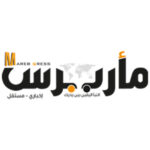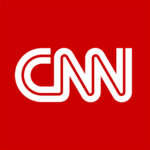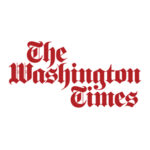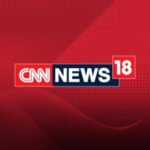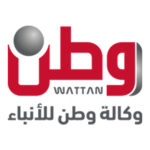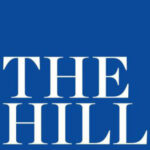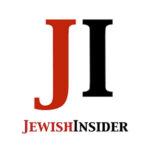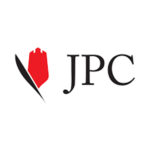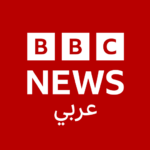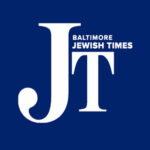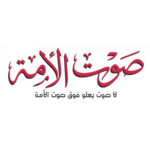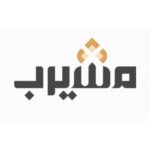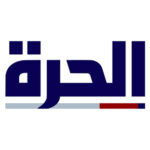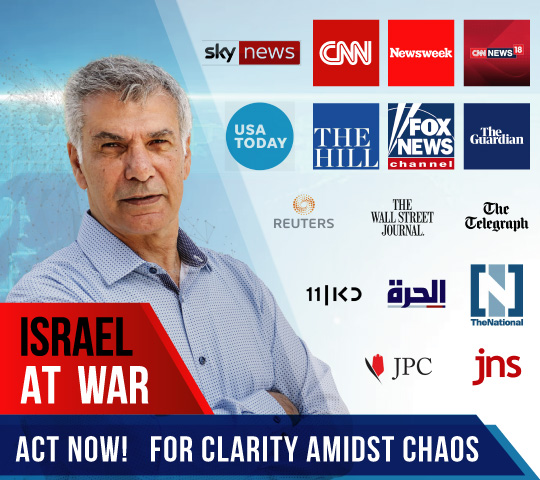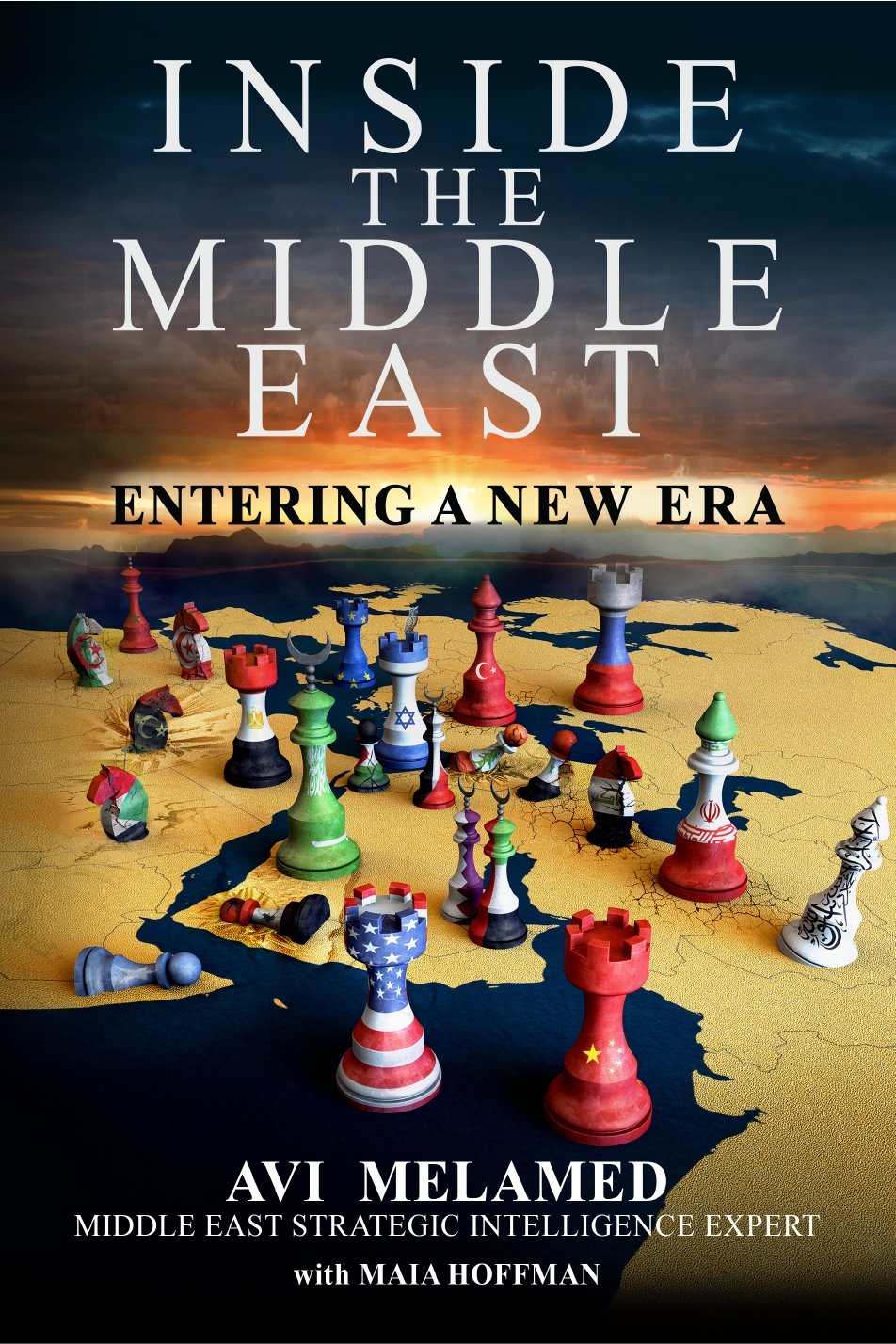|
Getting your Trinity Audio player ready...
|
Extended Intelligence Report – July 2017 Temple Mount Compound Crisis: Regional Perspectives
On July 16, 2017 I wrote an Intelligence Bulletin – The Attack on The Temple Mount Compound: Regional Reactions. This is an extended Intelligence Report on the issue.
*** Intelligence Report ***
Information:
On Friday July 14, 2017, three Israeli-Arabs opened fire on Israeli Border Patrol Police securing the Temple Mount Compound in the Old City of Jerusalem.
All the attackers and two Israeli Border Patrol Police were killed, and another policeman was injured.
The attackers were Israeli-Arab citizens from the Arab-Israeli town of Umm Al-Fahm, located in central Israel. The three reportedly had no criminal or terror records.
Following the Friday attack, Israel closed the Temple Mount Compound.
Israel opened the Temple Mount Compound 48 hours after the terror attack.
In addition, Israel placed metal detectors and monitoring cameras at the entrances to the compound.
Israel’s measures resulted in violent demonstrations of Palestinians in Jerusalem and in some areas under the control of the Palestinian Authority in the West Bank during the weekend of July 21-22, 2017, a week after the terror attack in the Temple Mt. Compound.
During the violent demonstrations three Palestinians were killed and dozens were injured.
On July 24, 2017, the Israeli government decided to remove the metal detectors and security cameras.
As of the beginning of August 2017, tensions seem to be somewhat diffused and contained.
Background:
The Temple Mountain Compound is known in Arabic as Al-Haram As-Sharif (The Noble Sacred Site).
Al-Haram As-Sharif is the third most sacred place for Muslims after Mecca and Medina – both of which are located in the Arab Peninsula.
Al-Haram As-Sharif contains two famous Islamic structures. The Dome of the Rock and the Al-Aqsa Mosque – both built towards the end of the 7th Century.
The Temple Mt. Compound is known in Hebrew as Har Ha Bayit (The Mountain of the Temple).
Har Ha Bayit is the most sacred place for Jews.
The ancient Jewish Temples were located inside the compound. Both were demolished. The First Temple was destroyed by the Babylonians in 586 BCE. The Second Temple was destroyed by the Romans in 70 CE. Part of the western perimeter of the ancient Jewish Temple which is preserved in our times is also known as the Western Wall, known in Hebrew as Ha-Kotel Ha Ma’aravi (The Western Wall).
Since the demolition of the Second Temple, the Western Wall – as the only remaining remnant of the Temple – is the most sacred site for Jews.
Between 1948 and 1967 the Temple Mount Compound was ruled by Jordan.
Since the 1967 War, the Temple Mount Compound has been under Israeli control.
Israel is responsible for security inside the Compound, while an Islamic administrative apparatus known as the Waqf is in charge of the day to day aspects in the Compound – including ceremonies and observances, religious classes, maintenance, tourism, etc.
The Waqf receives its funding from Jordan. Article 9 of the 1994 Israeli-Jordanian Peace Treaty reads: “In accordance with the Washington Declaration, Israel respects the present special role of the Hashemite Kingdom of Jordan in Muslim Holy shrines in Jerusalem. When negotiations on the permanent status will take place, Israel will give high priority to the Jordanian historic role in these shrines.”
Due to the Temple Mount Compound being a place of such significance, it has the potential to be highly flammable. Therefore, from time to time, it is a stage for the eruption of violence and tensions.
For example, in August 1969, an Australian tourist set a fire inside the Al-Aqsa Mosque, causing damage mostly to some artifacts in the Mosque.
In October 1990, Palestinians inside the Compound threw stones at thousands of Jews praying at the Western Wall located beneath the platform of the Temple Mount Compound. A small Israeli police station located inside the Compound was set on fire, and the policeman were attacked by the Palestinians. The Israeli Border patrol stormed the compound and the violent collision with the Palestinians resulted in the killing of twenty-one Palestinians, and some 150 were injured.
A Resolution passed on October 13, 2016, and formally ratified on October 26, 2016, by the General Conference of UNESCO refers to The Temple Mount Compound only by its title in Arabic. That resolution is viewed by Israel, as well as other international factors – including the United States, as a biased resolution denying the historic connection of the Jews to the Temple Mountain Compound.
Analysis and Evaluation:
A. Israeli-Jews and Israeli-Arabs Relations
The July 2017 crisis over the Temple Mount Compound provides a closer look the complex, multi-faceted relationships between Israeli-Jews and Israeli-Arabs.
The attack and its aftermath further increases tensions between Israeli-Arabs and Israeli-Jews.
Israeli-Arabs are full Israeli citizens. There are about 1.2 million Israeli-Arabs in Israel, comprising about twenty-percent of Israel’s citizens. Most Israeli-Arabs are Muslims.
The relations between Israeli-Arabs and Israeli-Jews are complex and multi-layered.
On the one hand, Israeli–Arabs are part and parcel of Israeli society. Many Israeli-Jews and Israeli-Arabs work together in building, commerce, finance, Hi-tech, hospitals, media, non-profits, schools, shops, tourism, etc. Israeli-Arabs have a substantial representation in the Knesset – Israel’s Parliament, the Knesset has 120 Members – 13 of whom are Israeli-Arabs. Israeli-Arabs hold senior positions in the Israeli Government and in the Judicial systems. Thousands of young Israeli-Jews and Israeli-Arabs study together in universities, etc.
On the other hand, as opposed to the majority of Israeli-Jews, who view Israel as Jewish, democratic state, the majority of Israeli-Arabs do not embrace the Zionist vision.
The majority of Israeli-Arabs argue that Israel cannot at the same time be democratic and Jewish.
Israeli-Arabs are Israeli citizens. However, emotionally and politically they identify with the Palestinian narratives, and thus define themselves also as Palestinians, and see themselves as an integral part of the Arab world. The Arab world calls the Israeli – Arabs “The Arabs of 1948“- referring to the fact that they stayed inside Israel’s borders and under Israeli sovereignty following the 1948 Israeli-Arab War.
The opposing views and narratives between Israeli-Jews and Israeli-Arabs is a source of constant tension which ebbs and flows over time.
These tensions emanate from three major factors:
- The escalating Israeli-Palestinian conflict, the growing death toll on the Palestinian side, and the dire situation inside the Gaza Strip.
- The growing presence and impact of Radical Islamist narratives and propaganda – which is of course anti-Israel and anti-Jewish – in the Muslim and Arab world. In the Israeli-Arab community, the proliferation of this phenomenon is manifested by the growing influence of the Islamist Movement – Northern Branch.The Islamic Movement – Northern Branch identifies with Hamas and Muslim Brotherhood ideology. Its leader, Sheikh Raed Salah, promulgates a vigorous anti-Israel line. As an outcome of the movement’s bitter animosity towards the state of Israel, and the active role of its leaders in encouraging incitement and violence, the Israeli government decided to outlaw the movement’s Northern Branch in November 2015. In 2016, Salah was indicted by the Israeli Supreme Court for Incitement and Hate Speech and was imprisoned in 2016 for nine months, he was released in January 2017. A major theme of The Islamic Movement – Northern Branch’s propaganda is the narrative that the Al-Haram As-Sharif is in danger because of alleged Israeli plans to erase the Islamic symbols and heritage of the site. Though groundless, this narrative has a very receptive audience among Israeli-Arabs.
- Deep sentiments of frustration among Israeli-Arabs because they feel that they are discriminated against by the government. Though Israeli governments allocate increasing budgets to the Arab sector, Israeli-Arabs argue they need larger budgets for development, infrastructure, police, education and employment initiatives, and many other aspects of day to day life. These demands are very justified.
In October 2000, incited by the narrative that “Al-Haram As-Sharif is in danger” which sparked the outbreak of the second Palestinian uprising (Intifada), a wave of mass riots and demonstrations swept through some Israeli-Arab communities, as well as some cities with mixed populations such as Acre and Jaffa. During the riots, Jewish drivers, and on some occasions – Israeli Jewish neighborhoods – were attacked with stones and Molotov Cocktails. The wave of violence in October 2000 resulted in one Israeli-Jew being killed by a stone and thirteen Israel-Arabs being killed by the Israeli police. Hundreds of people were injured and properties were damaged.
The October 2000 events deepened the tensions between the two communities.
The growing tensions fueled expressions of hostility among Israeli-Arabs towards Israel.
These growing tensions have translated – though very rarely – into Israeli-Arab terror attacks on Israeli-Jews, increasing resentment and suspicion among Israeli-Jews towards Israeli–Arabs.
Two facts indicate that the perpetrators of the attack in the Temple Mount Compound on July 14, 2017 were motivated by Radical Islamic narratives.
- First, they came from the Israeli-Arab city of Umm Al Fahm, the major stronghold of the Islamic Movement-Northern Branch, and a major stage of the 2000 riots.
- Two, shortly before the attack the perpetrators posted messages on social media platforms praising the concept of dying for the glory of Islam. Those messages bear the clear fingerprints of Salafi -Jihadi Though the infiltration of Salafi-Jiahdi ideology into the Israeli-Arab community is very limited, the Israeli Security Agency – Shabak – (ISA) has intercepted a few attempts of Israeli-Arabs to form terror cells inspired by Salafi-Jihadi ideology. In addition, a few Israeli-Arabs have tried to join Salafi-jihadi groups fighting in Syria.
The attackers were members of a very large Hamulah in Umm al-Fahm (Hamulah is a congregation of many families sharing the same genealogy, and includes hundreds or even thousands of men). Some members of that Hamulah were killed in the October 2000 events. Thus, it is possible the attackers were also motivated by feelings of revenge.
B. Regional Perspectives
The July 2017 crisis over the Temple Mount Compound also provides a closer look at the complex inner-Arab politics.
“Defending Al-Haram As-Sharif and Al-Aqsa” is a powerful slogan, deeply rooted emotionally among the Muslim masses, and present in the educational system, intellectual discussions, and in the political discourse.
The narrative of “Defending Al-Haram As-Sharif and Al-Aqsa” and ending Israel’s rule on Al-Haram As-Sharif is one of the few consensual narratives within the divided Arab world.
The concept of “Defending Al-Haram As-Sharif and Al-Aqsa” is major card Muslim leaders play – in their own way, and towards their own specific goals. It is a tool to gain popularity and political credibility. This was clearly exhibited during the events following July 14.
As expected, during the crisis, Arab States, Governments, and Rulers strongly echoed the “Defending Al-Haram As-Sharif and Al-Aqsa” narrative, generally focusing on three themes depending on which one suited their individual goals.
- Violation of Rights ~ That Israel’s measures following the attack were: “a provocation and a violation of Muslim rights to worship.” Turkish President Erdogan, always looking for an opportunity to position himself as a leading figure in the Muslim Sunni world, described Israel’s measures as “a crime against humanity.”
- Concerns of Evoking Violence ~ “Concerns that the Israeli measurements will evoke violence.” For example, the Secretary General of the Arab League declared that “Israeli measures in Al-Haram As-Sharif (i.e.: closing the Compound for Muslims prayers the day of the terror attack) will play to hand of extremism and will increase tension”.
- Condemning Violence ~ The third theme expressed, for example, by the Palestinian President, Mahmoud ‘Abbas and the King of Jordan, ‘Abdullah II was “condemning violence.” That theme clearly dialogues with the new tone set by the Trump administration and major European leaders demanding that Muslim leaders join the global effort in the fight against Islamic terror. The United States made it very clear that the attack in the Temple Mt. Compound was a terror attack. Thus, Arab rulers and governments cannot be viewed as if they justify – let alone support – the attack.
Yet, leaving the inevitable rhetoric aside, reactions of most Arab rulers and governments could be generally characterized as “mild.”
For example:
- The most significant religious authority of Sunni Muslims – the Al-Azhar Institute in Cairo, made a formal declaration regarding the event on the Temple Mount only a week after the attack. That is not a coincidence, it clearly reflected Egypt’s desire to end the episode as soon as possible and to avoid further deterioration.
- Meetings of Foreign Ministers of Arab States which were defined as “urgent” to discuss the crisis were postponed twice; it was likely out of a hope that in the meantime the crisis would calm down.
- The Saudi Arabian government condemned Israel and urged international community to block Israeli measures. That was Saudi Arabia’s way of signaling its desire to end the crisis as soon as possible.
- Turkish President Erdogan did not miss the opportunity to try and harvest some credits. He described Israel’s measures as “a crime against humanity” and urged Muslims from all over the world to “come and to pray in Al-Aqsa.” Shortly after those fiery statements – once he noticed that the crisis was dissolving, Erdogan turned to deal with other issues that are more important to him.
Thus, reading in between the lines of the Arab governments and rulers responses during the crisis, reveals the real priorities and agenda of the regional factors.
And the fact is – that defending Al -Quds and the Palestinians, are not a top priority on the agenda of Arab governments and leaders today.
Three major issues are the top priorities of major Arab states today:
Addressing significant domestic challenges
Confronting Islamic Militant terror
Blocking the aggressive Iranian expansion
In other words: The need for stability is a top priority for the major Arab states.
Aware of the deep impact of the narrative of “Defending Al-Aqsa” among Muslims, Arab leaders and governments know that the continuation, and escalation, of the crisis can ignite the masses, sparking growing instability in their own states.
Thus, Arab rulers’ interest was to end the crisis as soon as possible and to avoid further deterioration.
The Arab States interests in stability is further intensified due to the fact that regional factors such as Iran, Hezbollah, Hamas, Islamic Jihad in Palestine, and Salafi-Jihadi groups strive to use the crisis as a platform to foment violence and instability.
A Senior Iranian official announced that “The Israeli measures will not pass without a reply of the Palestinian people and the Resistance (Al-Muqawama).” (Al-Muqawama (The Resistance) is a yearning for an alternate world order in the spirit of radical Islam, eradication of Western influence in the region, and most importantly, an unrelenting struggle against Israel until it is annihilated.)
The slogan “Liberating Occupied Jerusalem” is card often used by Iran and its proxies to harvest support and credit in the Muslim world:
Al-Quds (The Arabic word for Jerusalem) Day” is an annual event held on the last Friday of Ramadan. It is a concept that was created by the Islamic Republic of Iran in 1979 to express solidarity with the Palestinian people and to oppose Zionism and Israel’s existence. It is a day of mass demonstrations in Iranian cities, as well as other Muslim and Arab states – and some Muslim communities in the West, calling for the elimination of Israel.
Hassan Nassrallah, the leader of the Lebanese Hezbollah, justifies Hezbollah’s involvement in the war in Syria saying – without blinking – that “The road to liberate Jerusalem is passing through the Syrian city of Aleppo.” He added, “Every martyr falling for us in Syria and laid to rest here in Lebanon is a martyr for the sake of Syria, Lebanon and Palestine. After God, Iran is the only remaining hope to free Palestine. If you are an enemy of the Islamic Republic of Iran, then you are an enemy of Palestine.”
Today, Hezbollah – once viewed by the Muslim world as the noble spearhead of Al-Muqawama before their involvement in the war in Syria at the behest of their patron Iran – is loathed by large sectors of the Muslim Sunni world. As far as Sunnis are concerned, Hezbollah has the blood of tens of thousands of Sunnis who have been killed in the war in Syria on their hands. And furthermore, the Arab Gulf Monarchies and Egypt formally define Hezbollah as a “terror group.”
It is no wonder then, that following the mild reactions of Arab governments and rulers to the Temple Mount crisis, Hezbollah’s media outlets rushed to use the opportunity to criticize those governments and leaders for their tepid response.
Hezbollah’s reaction to the Temple Mount events and proclaiming themselves as “defending Al-Aqsa” was an attempt by Hezbollah to appeal directly to the Sunni masses, in the hopes of achieving two major goals:
- Rehabilitate Hezbollah’s image
- Spark and stimulate anger and discontent among the Sunni masses due to their rulers’ mild reaction during the crisis.
Hezbollah’s attempt to use this event as a vehicle to regain its respect, authority, and power in the Arab world is not likely to be successful because few in the Arab world today have a favorable view of Hezbollah.
Reactions of the Arab leaders also reveal the role of Al Quds in the complex inner-politics of the Arab world.
King Salman of Saudi Arabia formally congratulated Jordan’s King ‘Abdullah II for his “wise management of the crisis.” However, sources affiliated with the Saudi Royal Court were quoted as saying that it was thanks to King Salman’s activity behind the scenes that the crisis came to an end.
This episode reflects the history of complex relations between the Saudi Dynasty and Hashemite Dynasty.
Both the Hashemite and Saudi Dynasties come from the Bedouin tribes located in the Arab Peninsula – the birthplace of Islam. Both dynasties draw their legitimacy from their Islamic legacy; one of the Saudi King’s titles is “The Defender of the two holiest places for Islam” (Mecca and Medina). One of the titles of the Jordanian King is “The Servant of Al-Quds.”
The Hashemites are descendants of the Prophet Mohammad; they are named after his grandfather Hashem.
Competition over prestige and leadership characterizes the long history of relations between the two dynasties.
Hence, given the significance of Al-Quds in Islam and in Arab culture, both dynasties must have a say on the issue of Al-Quds.
The importance of Al Quds as source for legitimacy for Arab Kings was also echoed in the official announcement of the Arab League, which praised the connection of the Hashemite dynasty to Al-Quds and – at the same time – also expressed gratitude to the King of Morocco, Mohammad VI, for his role during the crisis, even though – the fact is, he did not have a notable role in the events.
Similar to the Hashemite and Saudi Dynasties, the legitimacy of the King of Morocco is based upon on familial lineage – a long heritage and legacy, going back to Fatimah – the daughter of the Prophet Mohammad and to ‘Ali Ibn Abi Talib, his son-in-law. Thus, similar to the Jordanian King and the Saudi King, the Moroccan King also must have a say on the issues of Al Quds.
The reactions in the Arab world also reveal the complex Jordanian-Palestinian relations, and in particular their relationship when it comes to Al-Quds.
As stated earlier, the narrative of “defending Al-Aqsa” is clearly one of the most – if not the most – strongest narrative and unifying symbol of Palestinian nationalism and heritage.
However, as stated above, the title of “The Servant of Al-Quds” is a central and important narrative for the Hashemite Dynasty as well. One should remember, Jordan was the Sovereign in Al Aqsa and Al-Haram as-Sharif from 1948 to 1967. As mentioned earlier, article 9 of the 1994 Israeli-Jordanian Peace Treaty reads: “In accordance with the Washington Declaration, Israel respects the present special role of the Hashemite Kingdom of Jordan in Muslim Holy shrines in Jerusalem.”
The Hashemite Dynasty has no intention of allowing the Palestinians exclusive control over Al-Aqsa. Indeed, to emphasize that point, on August 2nd, the Jordanian King pledged a one million dinar (about 850,000 USD) contribution to the Waqf of Jerusalem.
C. Palestinian Perspectives
As stated above, the narrative of “defending Al-Haram As-Sharif,” is clearly one of the most – if not the most – strongest narrative and unifying symbol of Palestinian nationalism and heritage. Therefore, it is a central component of all Palestinian factors’ ideology and propaganda.
The military force of the Islamic Jihad in Palestine (IJIP), for example, is called Sarya Al-Quds (The Companies of Jerusalem).
Hamas’ military force, the Ezzedeen Al-Qassam Brigades often praises and promotes the narrative “defending Al-Haram As-Sharif.” In this video for example, Hamas presents Jaish Al-Quds (The Army of Jerusalem).
During the two weeks following the terror attack, both the Palestinian Authority and Hamas – the two major political factors within the Palestinian arena – voiced a very tough line – combining fiery rhetoric with violent demonstrations (mostly in Jerusalem and the territories under the control of the Palestinian Authority in the West Bank – much less in the Gaza Strip, controlled by Hamas) and non-violent protests (mostly in the shape of mass prayers outside the Temple Mount Compound) – all threatening to escalate the protests and spark massive violence.
The Palestinian outcry reflects both the centrality of the narrative of “defending Al Aqsa” as well as the depth of the dire, gloomy, and confused phase the Palestinians are going through. The major reason for which is the events in the Arab world.
Today Arab states are struggling to maintain stability in the face of increasing challenges and growing violence and chaos. One result of that, is that the Palestinian issue is no longer a high priority on their agenda.
The Palestinians know this. They are frustrated. But cannot do anything to change it.
In addition, Palestinians, who are predominately Sunni Muslims – with a small and shrinking number of Palestinian Christians, are dazed and confused by the terrifying events in Arab states. In the face of scenes of Muslims butchering Muslims and Muslims persecuting Christians in the Middle East, narratives and slogans like “Arab Solidarity” and “the Brotherhood of Arabs” which are embedded within the Palestinians – as well as Israeli Arabs, are hollow, sad, and cynical statements. That reality further fuels inner debates, tensions, and confusion among the Palestinians who do not know how to digest and dialogue with that reality.
Thus, left on the side of the road by their own brothers, dazed and confused, Palestinians feel they have become irrelevant.
This feeling is further emphasized by the fact that the current US administration is clearly closer to the Israeli narratives and positions than the Palestinian narratives and positions.
The recent visit of India’s Prime Minister, who did not even bother to pay a visit to the Palestinian President, Mahmoud Abbas was a further blow – the flourishing Israeli-India relations are painful to the Palestinians; India used to be very supportive of the Palestinian arguments and positions, and now that has changed.
Knowing that Arab rulers as well as international community are concerned with the possibility that violence on Al Haram As Sharif could spark unrest among the masses, the Palestinians use the issue of Al Haram As Sharif and the slogan of defending Al Aqsa as their most powerful card.
The Palestinian position during the weeks following the terror attack also reveals the multi-layered complex political calculations and interests of the two major Palestinian factors – Fatah (The major factor within the Palestinian Authority) and Hamas.
Fatah and Hamas compete with each other over support among the Palestinians. The two entities offer different – and to large extent, opposing – views regarding the path, identity, and direction of the Palestinians.
Hamas, which is struggling with tremendous and mounting challenges in the Gaza Strip, currently has the weaker hand in that inner-Palestinian power struggle. (To understand why, see my June 2017 article, Tasting the Bitter Pill of Reality: Hamas’ New Political Pact).
A UN report published in July 2017 warns that in 2020 the Gaza Strip will not be suitable for living. That report plays into the hands of the Palestinian Authority who makes it very clear that Hamas is responsible for the dire situation in the Gaza Strip. The PA demonstrated this, for example, while commemorating ten years of Hamas’ takeover of the Gaza Strip (June 2007). The PA capitalized on the occasion to formally describe Hamas’ rule of the Gaza Strip as “A catastrophe for the Palestinian people second only to the outcomes of the 1948 War.”
Hamas, therefore, was trying to maximize the crisis over the Temple Mount to turn the tables.
By criticizing ‘Abbas for his mild response during the crisis, and by inciting Palestinians to launch a new, violent uprising in Israel and in the areas controlled by the Palestinian Authority, Hamas was trying to win political credit and rehabilitate its popularity at the expense of the PA and the Palestinian President ‘Abbas.
However, in sharp contrast to Hamas leaders’ fiery statements and declarations during the crisis, the Gaza Strip remained relatively calm. That is not a coincidence.
Why?
The reason that Hamas, which rules the Gaza Strip, incited violence – yet the Gaza Strip itself remained calm, was due to the current honeymoon between Hamas and Egypt.
Hamas, experiencing a dire situation in the Gaza Strip (to understand why, see Tasting the Bitter Pill of Reality: Hamas’ New Political Pact) desperately need Egypt’s friendship.
Egypt is reportedly planning to open the Rafah Crossing connecting Gaza to Egypt on a more structured schedule. This will alleviate the pressure on the people of Gaza. For Hamas, opening the Rafah Border Crossing is a matter of utmost importance.
Egypt, however, does not give free meals.
In return for opening the Rafah Crossing, Egypt demands that Hamas must keep the Gaza Strip calm.
Hamas knows that if unrest in Gaza, generated by the events on the Temple Mount Compound, ignites Egypt’s streets, the honeymoon with Egypt will come to a swift end.
That is the reason the Gaza Strip – in spite of Hamas’ fiery statements – remained calm.
That is also the reason that, in spite of the fact that Egypt is a partner with Saudi Arabia in imposing sanctions on Qatar – Hamas’ major sponsor, and in spite of the that fact Egypt defines the Muslim Brotherhood – Hamas’ mother movement – as a terror organization and persecutes its leaders and activists, Hamas did not dare to criticize Egypt – not even a hint – for its mild position during the crisis. Hamas does not want to jeopardize its honeymoon with Egypt.
Similar to Hamas, the Islamic Jihad in Palestine (IJIP) condemns the Palestinian President’s position, yet says nothing about Egypt’s position. In fact, in the midst of the crisis, IJIP senior leadership visited Egypt – invited by the Egyptian government to hold talks about the situation in the Gaza Strip. The IJIP spokesman complimented Egypt for conducting talks in a “good atmosphere.”
As opposed to its gentle approach towards Egypt’s mild position during the Temple Mount crisis, Hamas did criticize Saudi Arabia’s tepid position regarding the events.
Hamas’ criticism of Saudi Arabia has to do with the long history of tense relations between Saudi Arabia and the Muslim Brotherhood – Hamas’ mother movement. In March 2014, Saudi Arabia formally defined the Muslim Brotherhood Movement as a terror organization.
The tension is compounded by the fact that in June 2017, Bahrain, Egypt, Saudi Arabia, and the United Arab Emirates joined forces to impose sanctions on Qatar. Qatar, a major sponsor of the Muslim Brotherhood and is also is Hamas’s biggest sponsor. Qatar’s financial aid to the Gaza Strip is estimated to be around a half-billion dollars – money which is allocated for physical infrastructure and the building of residential units. And in July 2017 Qatar pledged three million dollars for needy families in the Gaza Strip.
On Wednesday, July 13th, the day before the attack and subsequent events, Sami Bin Abdullah Salih – the Saudi Arabian ambassador to Algeria, defined Hamas as terror group.
In response, Mousa Mohammed Abu Marzook, Deputy Chief of Hamas’ Political Bureau, rushed to criticize Saudi Arabia for its position during the crisis, tweeting on his personal account: “It seems Saudi Arabia’s response to the fact that Muslims are banned for the first time from praying in Al-Haram As-Sharif is the declaration made by Saudi Ambassador to Algeria.”
By criticizing Saudi Arabia, Hamas is paying back the Saudis, and also using the opportunity to express loyalty and gratitude to its major donor and patron – Qatar.
The concepts of “Defending Al Aqsa” and eliminating Israel are core values of Salafi-Jihadi groups like Al-Qaeda, ISIS, and others. However, as of the beginning of August, these groups have had a very minor presence during the crisis – with the exception of two rockets shot into Israeli territory (causing no damage) probably launched by Salafi-Jihadi affiliated groups based in Gaza.
The minor role of Salafi-Jihadi factors during the crisis reflects these groups priorities. Liberating Al-Quds and eliminating Israel are not a top priority for Salafi-Jihadi groups agenda today. The top goal and priority of Salafi-Jihadism is to first of all, topple all political structures in Muslim societies. (For more on that and to understand why read my July 2017 article – Al Hazimi Ideology: Radicalization of Extremism.)
Prediction:
On July 16, 2017 – forty-eight hours after the terror attack on Temple Mount Compound, I published an immediate Intelligence Bulletin predicting the event will not result in a wave of violence spinning out of control.
At the time this report is published, it seems as if indeed my prediction was accurate and the crisis is over its peak.
The relations between Israeli-Jews and Israeli-Arabs will continue to exist on a spectrum of dialogue and coexistence on the one edge, and tensions and suspicions on the other edge. Both communities’ leadership will probably be able to calm the situation down and thus contain the current tensions and prevent a further deterioration.
In my evaluation, Israel, Jordan and the Palestinian Authority have an interest to avoid further deterioration and escalation. Thus, it is likely that an understanding between the sides will find ways to contain the situation and prevent further escalation.
As the crisis over its peak, and given the improvement of its relations with Egypt, Hamas’ incitement, rhetoric, and fiery statements over that crisis will likely fade away.
*** End Intelligence Report ***
Click here for a PDF of this Intelligence Report
If you want to have a better understanding of the news and what really drives the unfolding events…
Read the latest book of Avi Melamed,
INSIDE THE MIDDLE EAST | ENTERING A NEW ERA, available now >>>
Follow me on Twitter @AviMelamed; Facebook @InsideTheMiddleEast; for more Videos on YouTube https://www.youtube.com/c/AviMelamed
I can always be reached at Av*@********ed.com
